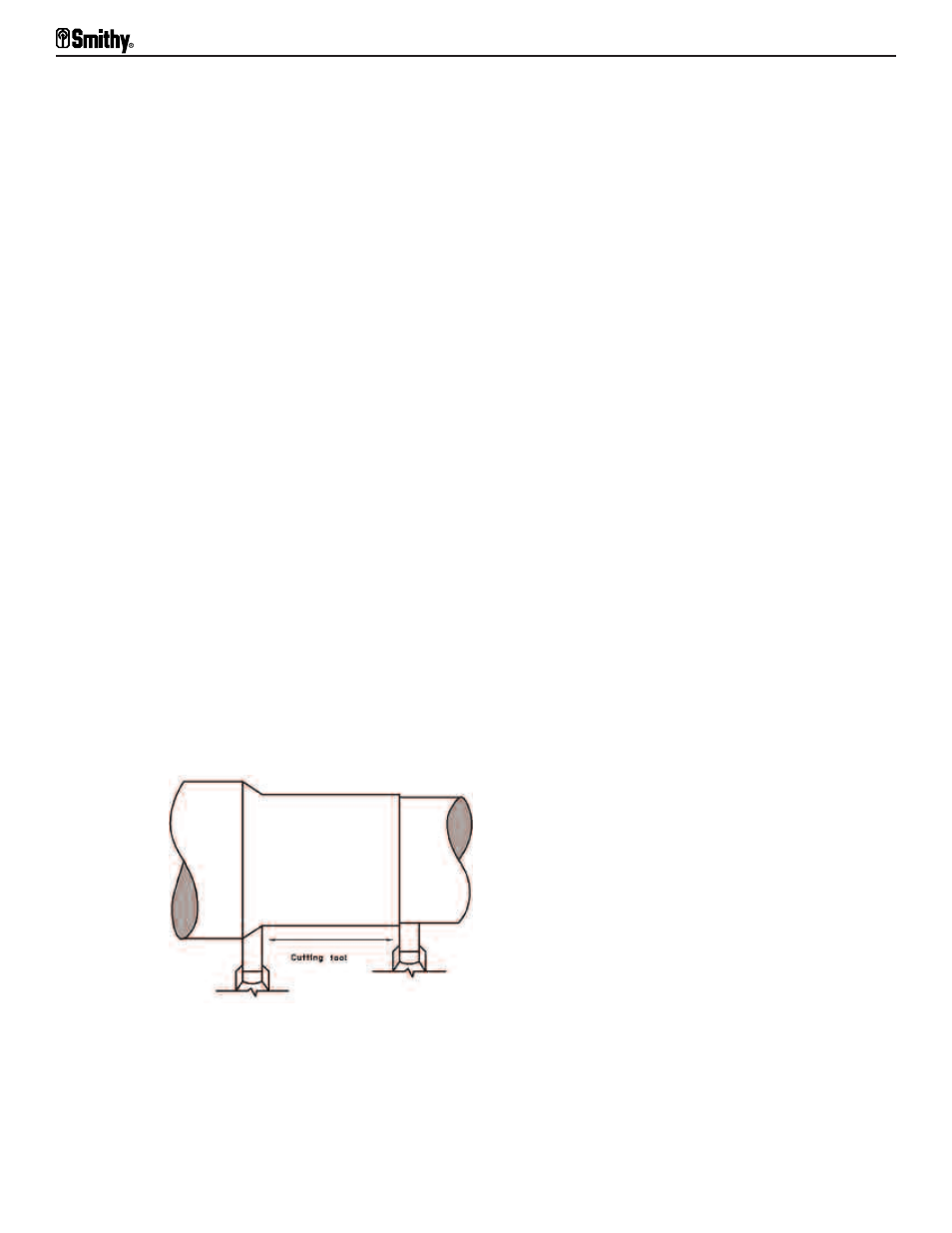Finish turning, Turning to shapes – Smithy Midas 1220 XL User Manual
Page 64

To reduce the diameter, advance the tool only half as many thousandths on the dial. This
is because the tool takes off an equal amount from both sides as it cuts a continuous strip
around the work. For example, to reduce the diameter of a shaft 0.005”, you advance the
tool only 0.0025”, or 1-1/4 calibrations.
Engage the tool before setting the floating dial. The tool must be moving in the direction
you want to go before you set the dial to zero to compensate for the backlash.
For a screw to move, there must be some play in the thread. When backing the cutting
tool away from the cut, move the feedscrew enough to take the backlash before setting
the collar or when the drawing the tool from the cut. Normal backlash is 0.008 – 0.015”.
Engage the longitudinal feed by rotating the half nut lever 90 degree to the right. Always
cut deeply enough to reach below the scale on oxidized bars or iron castings. Hard,
oxidized surfaces dull tools rapidly.
Finish Turning
1.
After you have rough-turned the workpiece to approximate finished size (within 1/32”),
replace your cutter bit with a freshly ground, keen-edge cutter.
2.
Make one or more light finishing cuts across the machined surface.
3.
Check the diameters carefully with a calliper or micrometer to be sure you are
working to proper dimensions. Remember: the diameter will reduce twice the thickness
of the cut.
For rough turning, most machinists prefer a deep cut and a comparatively fine feed, but
the reverse is true for finishing cuts. They usually use a very light crossfeed and a coarse
transverse feed with a cutting edge wider than the feed per revolution. In figure 12.2, the
left-hand tool illustrates the first roughing cut and the right-hand tool shows the
following finishing cut.
Figure 12.2 Roughing (left) and
finishing (right) cuts.
Turning to Shapes
Other turning cuts, machining shapes, corners, fillets, etc., are done the same way. The
main difference is in selecting cutter bits and maneuvering the cutting point by means of
various cutting tools (Figure 12.3).
12-2
For Assistance: Call Toll Free 1-800-476-4849
Midas 1220 XL Operator’s Manual
